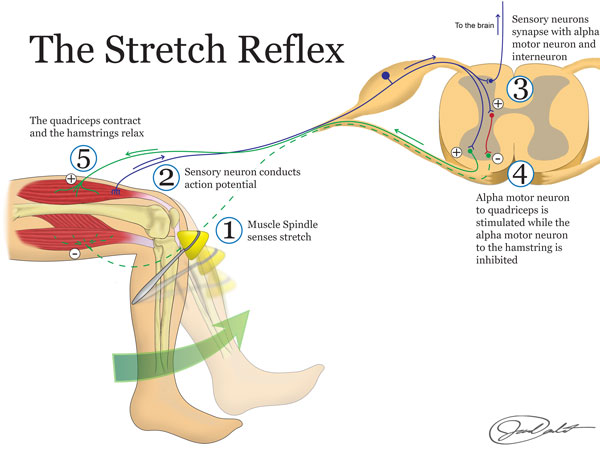The latest research on stretching for flexibility shows that a static stretch must be held for at least 30 seconds (up to 60 seconds – no further benefit was recorded past this point).
Optimal results were recorded when a muscle received just 5 minutes of stretching per week, so a stretching routine split over 5 days of 60 seconds per muscle is ideal.
The depth of stretch (self-perceived intensity) does not need to be intense. Optimal results were recorded when stretching at 30-40% perceived intensity and no further benefit was recorded when compared with stretching at 70-80% perceived intensity.
So, if you have 5 muscles that you want to target in your routine then doing a 60 second stretch for each (5 minutes total) at a moderate intensity (30-40%) on 5 separate days is all you need to do!
As with anything worth while, consistency is key here – results don’t happen over night and won’t just last forever when you’ve got them, so get that habit engrained. If consistency, focus, routine, habits (in any area of life) are something you struggle with then check out the book Atomic Habits by James Clear and thank us later.
If you’re interested in diving deeper on flexibility, stretching protocols and the science behind all of it then we highly recommend listening to this podcast episode Huberman Lab – Improve Flexibility with Research-Supported Stretching Protocols
Why Stretch For Minimum 30 Seconds?
The Stretch Reflex (Muscle Spindles) – Almost every muscle contains muscle spindles; these are stretch receptors that signal the length, and changes in length, of muscles by sending information to the central nervous system (CNS).
When a muscle is stretched the muscle spindle sends a message to the CNS, effectively saying “I’m being stretched, what shall I do?”. The central nervous system responds with an urgent “resist!” message. The muscle spindle carries this out by contracting the muscle to resist the stretch. This is to stop the muscle being damaged by forces which might otherwise stretch it to breaking point. So this is the stretch reflex; when a muscle is stretched, its reflex reaction is to contract.
This reflex is processed within the spinal column and the entire message exchange takes only 1-2 milliseconds. Only after about 10 seconds of stretching do the messages between the muscle and the central nervous system alter. The CNS realises that you are intentionally trying to stretch the muscle and sends a new message to the muscle spindle telling it to relax, allowing for stretch to occur. This Stretch Reflex process is why at least 30 seconds is required for a static stretch to be beneficial.

Disclaimer – Flux Sports Therapy takes no responsibility for any action you may take in relation to the content provided on this website. For any queries or actionable advice please contact us directly or book an appointment.
